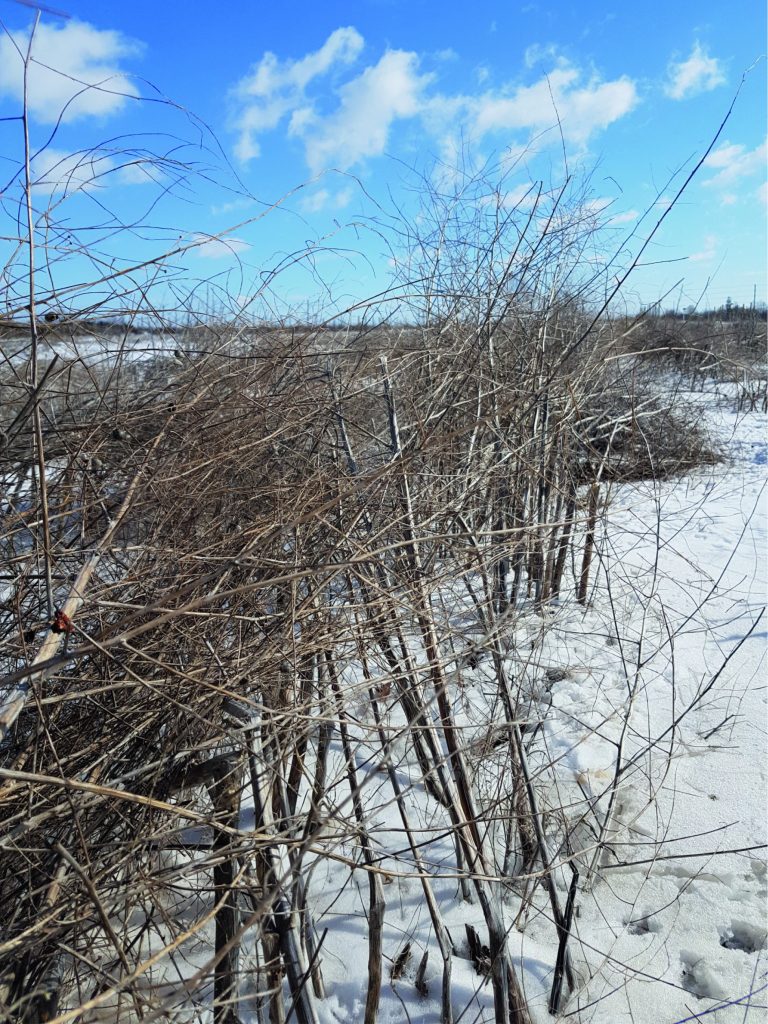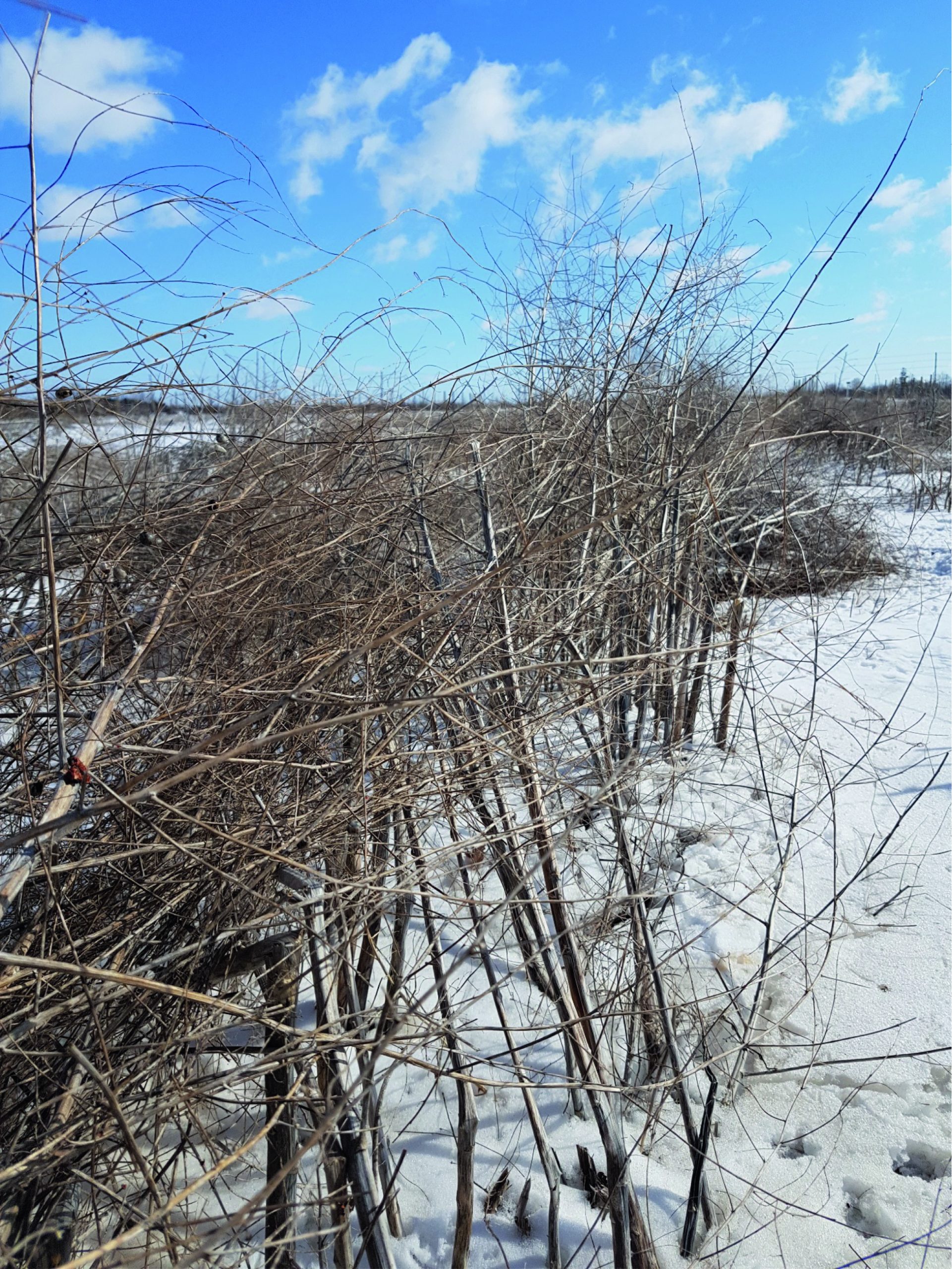Winterhardiness in Asparagus
Studies in our research group comparing cultivars with varying adaptation to the Canadian winter suggest that survival can be related to the timing of dormancy induction and acquisition of freezing tolerance in the autumn, as well as the timing of dormancy release with the loss of freezing tolerance in the spring. Subjecting crowns dug sequentially in the autumn and spring to controlled freezing temperatures allowed an estimation of LT50, or the temperature at which 50% of plants die, an indicator of freezing tolerance. Compared to UC157, Guelph Millennium acquired freezing tolerance earlier in the autumn, and maintained freezing tolerance later in the spring. Interestingly, the fern of Guelph Millennium also senesced earlier in the autumn than that of UC 157. Differences in LT50 values were correlated with levels of metabolites in the crown, known to affect the freezing of cells, and the rhizome appeared to be more vulnerable to damage than the storage roots.
Both cultivars had similarly high levels of freezing tolerance in late autumn and early spring, suggesting they may be equally capable of surviving during the coldest periods of winter. Due to the technical difficulties of digging crowns from frozen soil in mid-winter, LT50 values have not been estimated and cultivar difference during this period cannot be fully discounted.
Why does an un-adapted cultivar such as UC157 not survive well in Canada? The delay in dormancy acquisition and senescence in the autumn may make ferns vulnerable to early frosts. In turn, this could disrupt the reallocation of metabolites to the crown, which is vital for plant health and vigour. Most significantly, early loss of freezing tolerance in the spring can increase susceptibility to damage from subsequent freeze-thaw cycles, which are common in Canada. UC157 steadily lost freezing tolerance once the soil thawed, while Guelph Millennium maintained high levels for several weeks. The timing of dormancy release can be related to a critical trigger temperature. UC157 may respond to cool soil in early spring, while several weeks of soil warming appear necessary to affect Guelph Millennium.
Cultivar selection is an important decision for growers. Caution is necessary when considering cultivars bred in different regions. So, it is crucial to obtain trial data over multiple seasons, especially in cold climates, to account for erratic annual variations.
Read Also: Don’t freeze in the face of late frosts!
Read Also: 5 possibilities to manage late Spring Frost in Ontario
























